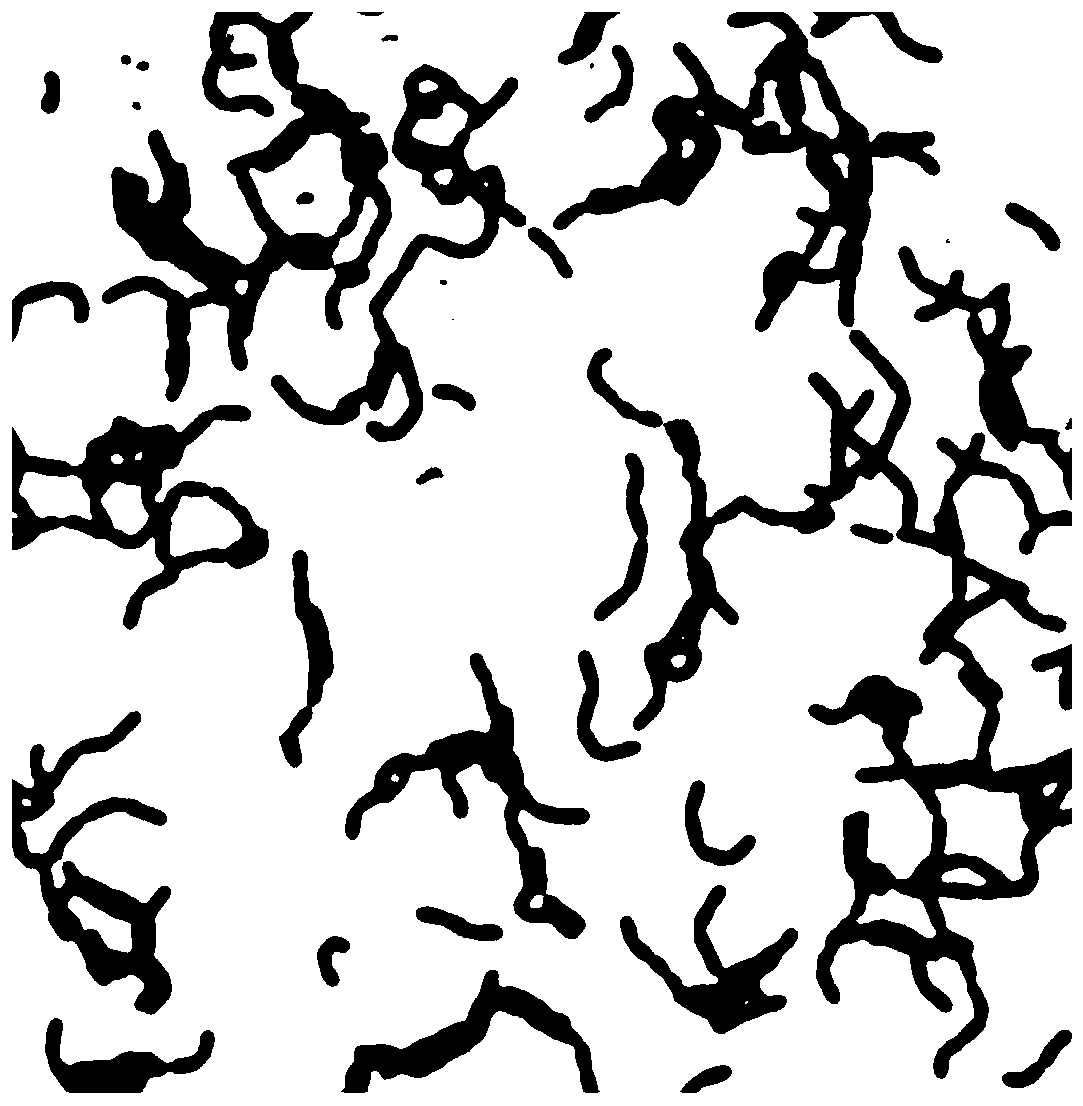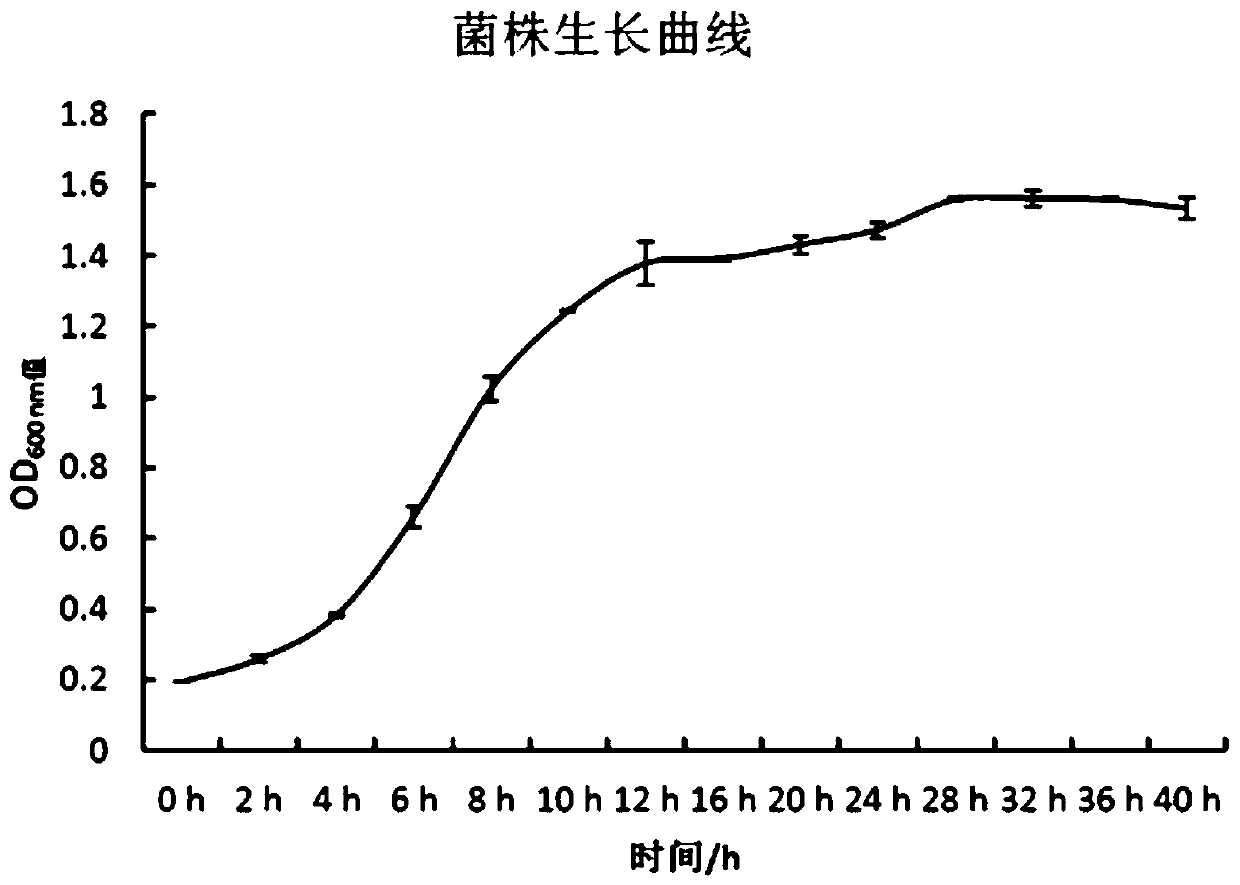Lactobacillus paracasei subsp. paracasei and application thereof
A paracheese and lactobacillus technology, applied in the field of microorganisms, can solve problems such as carcinogenicity and liver damage, and achieve the effect of good salt tolerance
- Summary
- Abstract
- Description
- Claims
- Application Information
AI Technical Summary
Problems solved by technology
Method used
Image
Examples
Embodiment 1
[0019] Example 1 Isolation and identification of Lactobacillus paracasei subspecies CGMCC NO.17893
[0020] 1. Isolation and screening of strains
[0021] Weigh 25g of soy sauce residue samples in a conical flask under aseptic conditions, add 225mL of sterile saline, shake slightly to prepare 10 -1 Diluent. Prepare 10 sequentially -2 ~10 -5 Diluents of equal concentration. Pipette 0.1 mL of soy sauce residue dilutions with different gradients and spread them on the MRS medium. Seal with a parafilm, label with relevant information, and incubate at a constant temperature of 37°C for 24-48 hours until colonies grow.
[0022] Pick suspected lactic acid bacteria colonies and purify them in three sections of MRS medium, and operate 2 to 3 times until the colonies on the medium have the same morphology. The purified strain was inoculated in MRS liquid medium, cultured in a 37°C incubator for 24h, mixed with 50% glycerol 1:1, and stored in a -80°C refrigerator. The screened Lact...
Embodiment 2
[0042]Example 2 Study on the growth characteristics of Lactobacillus paracasei subspecies CGMCC 17892
[0043] (1) Determination of growth curve
[0044] The Lactobacillus paracasei subspecies CGMCC NO.17893 bacterial strain screened out in the above-mentioned embodiment 1 is activated for three generations, cultivated at 37°C for 40h in MRS liquid medium, and measured the strain OD in every 2 hours 600 nm value.
[0045] The result is as image 3 As shown, it can be seen that the Lactobacillus paracasei subspecies CGMCC NO.17893 screened in embodiment 1 has good growth activity.
[0046] (2) Salt tolerance research
[0047] Prepare salt-containing MRS medium with 9 gradients of salt mass fractions of 0-9%, and sterilize it for use. The Lactobacillus paracasei subspecies CGMCC NO.17893 bacterial strain screened out in the above-mentioned embodiment 1 was activated for three generations, cultivated at 37°C for 24h in MRS liquid medium, and measured OD 600 nm value, the r...
Embodiment 3
[0050] Example 3: Research on the probiotic properties of Lactobacillus paracasei subspecies CGMCC17893
[0051] (1) Simulated gastric juice tolerance test
[0052] Activate the Lactobacillus paracasei subspecies CGMCC NO.17893 strain screened in Example 1 for three generations, draw 3mL of culture solution, centrifuge at 4000r / min for 10min at room temperature, remove the supernatant, obtain thallus, and suspend the thallus Prepare bacterial suspension in 3mL sterilized normal saline for later use.
[0053] Add artificial gastric juice and bacterial suspension (9:1) into a sterile centrifuge tube and mix well. Incubate at 37°C, at 0h (dilution of 10 -4 、10 -5 、10 -6 ) and 3h (dilution of 10 -3 、10 -4 、10 -5 ) to take a sample of 0.1 mL, and calculate the survival rate of the strains using the plate count method. The experiment was set up in triplicate.
[0054] Survival rate = (A 1 / A 0 )×100%
[0055] Note: A 1 is the surviving number of lactic acid bacteria tha...
PUM
 Login to View More
Login to View More Abstract
Description
Claims
Application Information
 Login to View More
Login to View More - R&D
- Intellectual Property
- Life Sciences
- Materials
- Tech Scout
- Unparalleled Data Quality
- Higher Quality Content
- 60% Fewer Hallucinations
Browse by: Latest US Patents, China's latest patents, Technical Efficacy Thesaurus, Application Domain, Technology Topic, Popular Technical Reports.
© 2025 PatSnap. All rights reserved.Legal|Privacy policy|Modern Slavery Act Transparency Statement|Sitemap|About US| Contact US: help@patsnap.com



